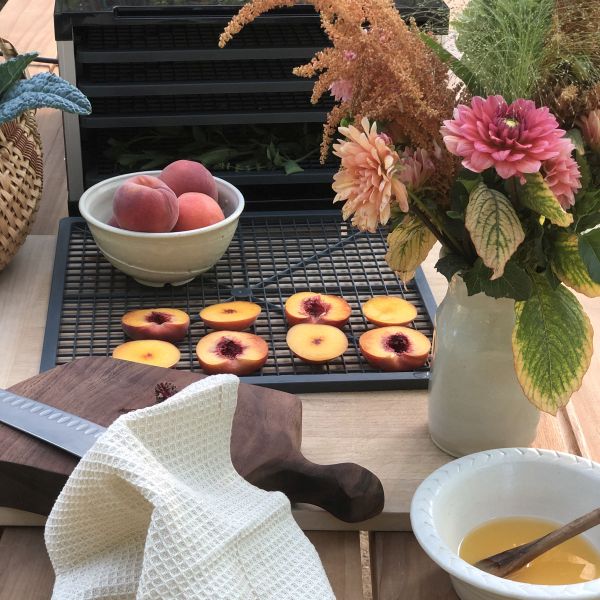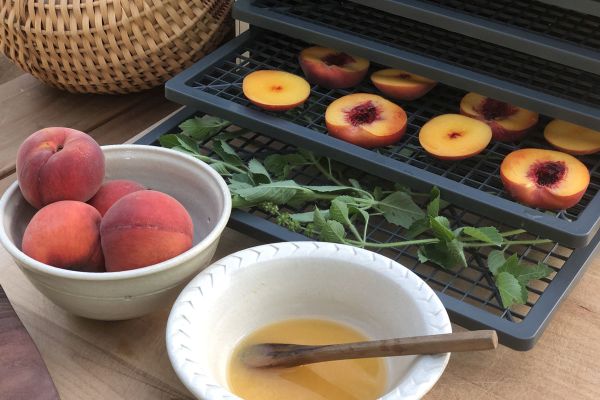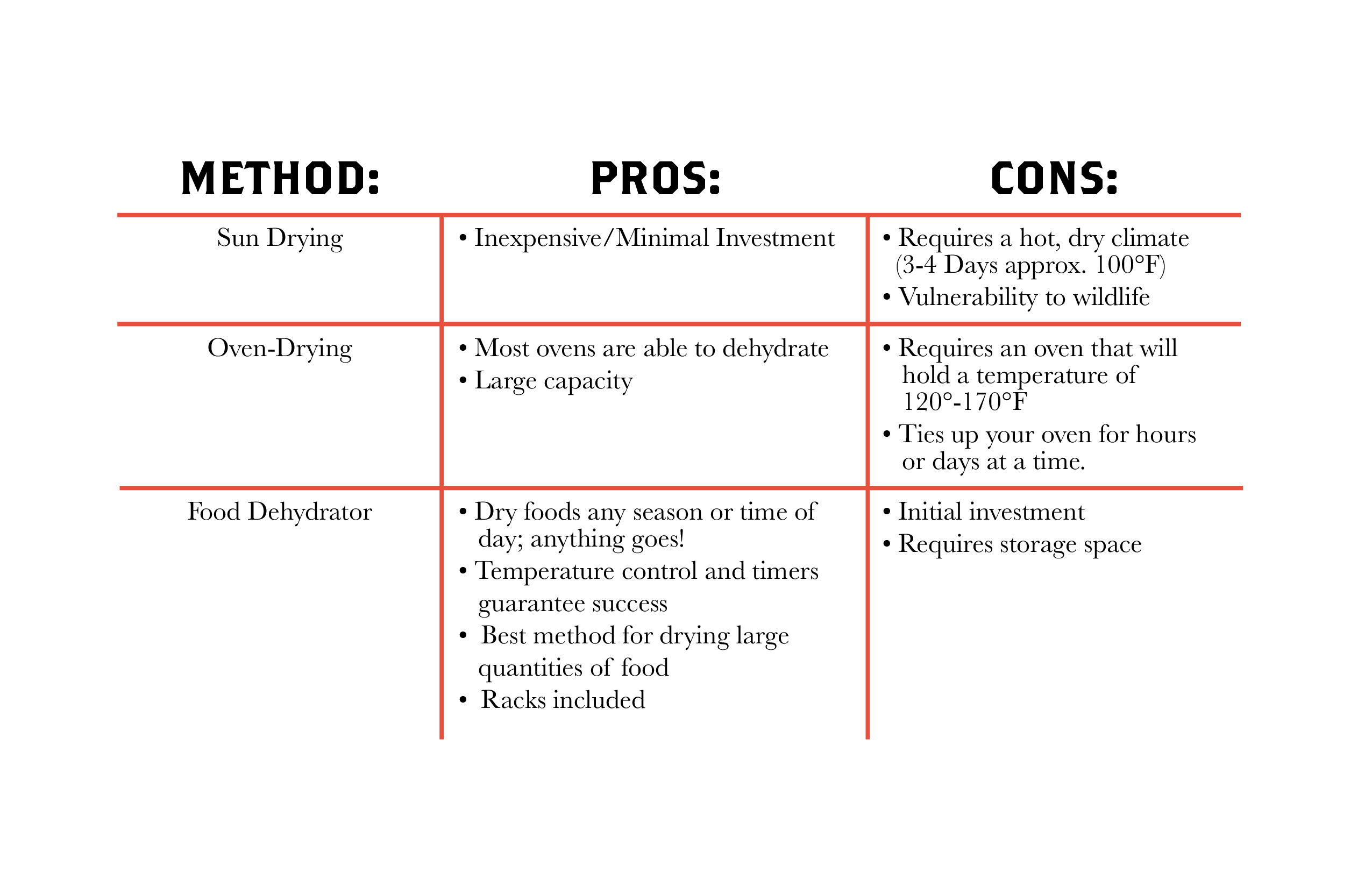

 Dehydrating your own fruits, vegetables, mushrooms, and meats is an essential way to extend your harvest and enjoy delicious foods year round.
Dehydrating your own fruits, vegetables, mushrooms, and meats is an essential way to extend your harvest and enjoy delicious foods year round.
A couple of fruit trees, a hunting trip, or a successful mushroom hunt can yield far more than one can eat in a week, and freezer space can fill up fast.
The price of sun dried tomatoes alone can justify investing in a food dehydrator that can process pounds of dried tomatoes overnight!
But where to start? Which method of drying foods is best for you?
Below is a quick reference on Sun Drying vs. Oven Drying vs a Food Dehydrator. (All methods require sheet pans or racks.)

In order to sun dry foods you will need several non-humid days with temperatures over 100*F. The objective is to dry the foods fast enough that they will not mold. When I am sun drying tomatoes here in the Central Valley, I check the weather report for at least 3 consecutive days over 100* F. I will prepare the tomatoes and set them out in the morning, and they will get a good wilt the first day. Ideally they will be fully dry in 3-4 days. If the weather turns, or the nights are getting cold, bring them inside and finish them in the oven.
If this is your first time dehydrating food, by all means, try dehydrating in your oven first! The only catch is that your oven needs to be able to hold a temperature that is low enough: ideally around 140*F, but up to 170*F can work if you oversee carefully. Start in the morning so that you can pay attention and rotate foods as needed. Arrange thinly sliced food on baking sheets, or on oven-safe racks. Rotate your pans/racks every hour or two, and flip stickier foods like peaches at least once. Dehydrating in the oven can take up a good chunk of the day (5-8 hours) so plan accordingly.
If you are planning on drying foods more than once or twice a year, and you do not live in a hot & dry climate, a food dehydrator is recommended. Dehydrators are honestly the surefire way to go! Temperature controls ensure you don’t burn your food, and timers allow you to dry overnight and still get a restful night of sleep. If a food dehydrator seems like too much, consider sharing with a friend or two to get maximum use of your investment.
 Herb gardens can be prolific (to say the least), and you can kick off your drying season by dehydrating oregano or mint in the spring when it is green and lush.
Herb gardens can be prolific (to say the least), and you can kick off your drying season by dehydrating oregano or mint in the spring when it is green and lush.
Dried Italian basil is a summer favorite, followed by tulsi, lemongrass, and rose petals for tea.
Smaller pieces like, chopped lemongrass, may benefit from dehydrating screen.
Dehydrate herbs at 110*F for approximately 5 hours, or until they are done.
Process as desired.
 Enjoy your summer peaches year round with this simple method.
Enjoy your summer peaches year round with this simple method.
Cut your peaches lengthwise into ½” slices (if they are smaller, you can get away with simply cutting them in half).
Dip them briefly in lemon or pineapple juice to help prevent browning.
Arrange the slices on your dehydrator racks and dry at approximately 140*F, until they are fully dry, but not too crispy.
To test, set a slice out until it reaches room temperature; it should be pliable, but not moist or gooey. You may also place a piece in a jar and see if any moisture collects. Food will dry at different rates, so check frequently towards the end, and remove the driest pieces until they are all done. For dried fruit and tomatoes, I’ll then place the whole lot in a bag or container and freeze for two weeks. This helps to kill off any microorganisms that might be lingering. Store fully dried food in airtight containers or mason jars and enjoy your beautiful snacks and ingredients until next year!
 Sienna Orlando-Lalaguna is the owner and maker behind Sienna Ceramics. She is a foodie, urban gardener, and plant-lover with a background in professional cooking. Her interest in food preservation stems from a love of local, organic produce, and a desire to extend the harvest from season-to-season. Sienna is interested in reviving the knowledge of fermentation, and bringing this ancient process back into modern communities like yours!
Sienna Orlando-Lalaguna is the owner and maker behind Sienna Ceramics. She is a foodie, urban gardener, and plant-lover with a background in professional cooking. Her interest in food preservation stems from a love of local, organic produce, and a desire to extend the harvest from season-to-season. Sienna is interested in reviving the knowledge of fermentation, and bringing this ancient process back into modern communities like yours!